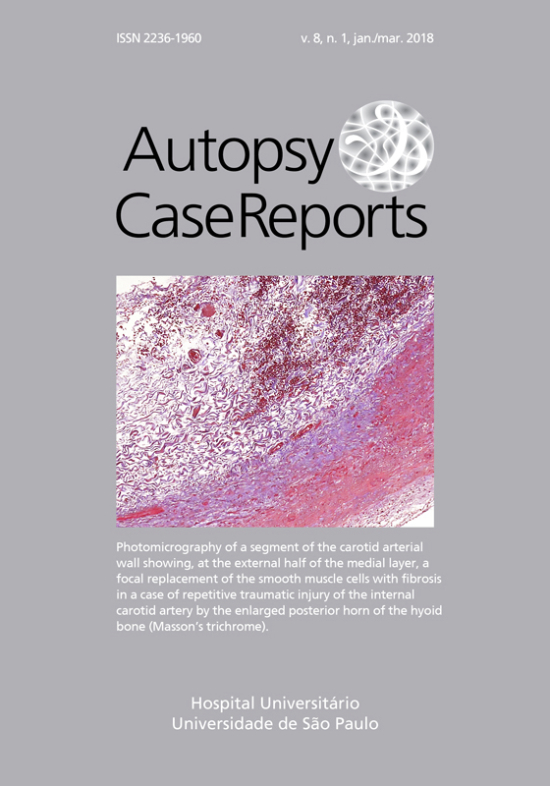Huge recurrent gastric neuroendocrine tumor: a second-line chemotherapeutic dilemma
DOI:
https://doi.org/10.4322/acr.2018.005Keywords:
Carcinoma, Neuroendocrine, Stomach Neoplasms, Neoplasm Metastases, Medical Oncology.Abstract
Chemotherapy is considered “state of the art” for the treatment of poorly differentiated neuroendocrine neoplasms. Unfortunately, there is no standard effective post-first-line treatment for relapsing high-grade gastroenteropancreatic neuroendocrine neoplasms. We report the case of a patient with a gastric neuroendocrine carcinoma stage IV, with massive gastrointestinal bleeding at diagnosis. After the first line of platin-based chemotherapy a major tumoral response was documented, but the patient relapsed after 4 months. A second line of chemotherapy treatment was given, with the FOLFOX regimen, and the patient has been free of progression for almost 2 years. There is no second-line standard treatment accepted for this type of carcinoma, but 5-fluorouracil combined with oxaliplatin showed interesting antitumor activity.Downloads
Download data is not yet available.
Downloads
Published
2018-03-13
Issue
Section
Article / Clinical Case Report
License
Copyright
Authors of articles published by Autopsy and Case Report retain the copyright of their work without restrictions, licensing it under the Creative Commons Attribution License - CC-BY, which allows articles to be re-used and re-distributed without restriction, as long as the original work is correctly cited.
How to Cite
Ribeiro, M. J. M., Alonso, T., Gajate, P., Molina, J., Barquin, A., Perna, C., & Grande, E. (2018). Huge recurrent gastric neuroendocrine tumor: a second-line chemotherapeutic dilemma. Autopsy and Case Reports, 8(1), e2018005. https://doi.org/10.4322/acr.2018.005



